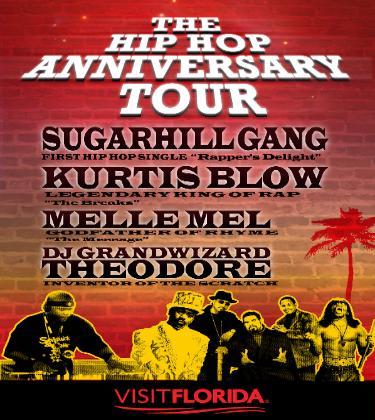
Qui di seguito potete leggere un’interessante articolo del 1986, tratto da RM Hip Hop Magazine, che descrive la scena hip hop di quegli anni. Buona lettura.
Your friendly neighborhood…
THX 1138
"THE ROOTS OF HIP HOP" – RM HIP HOP MAGAZINE 1986
In the beginning there was Africa, and it is from Africa that all today’s black American music, be it Jazz, R’n’B, Soul or Electro, is either directly or indirectly descended. The ancient African tribal rhythms and musical traditions survived the shock of the transportation of milllions of Africans as slaves to the Americas, and after 300 years of slavery in the so called Land of the Free the sounds of Old Africa became the new sounds of black America. Rapping, the rhythmic use of spoken or semi-sung lyrics grew from its roots in the tribal chants and the plantation work songs to become, an integral part of black resistance to an oppresive white society.
This ad-lib vocal style progressed throught the scat-singing of the early jazz days via pioneers like Cab Calloway and Slim Gaillard to the street poetry of the Last Poets in the Seventies. Musically, the old African folk songs and drum rhythms developed into the blues and urban jazz that by the 1950s made black America’s music known around the world.
Through the ever-present influence of gospel, Fifties rhythm and blues and various technical innovations like the electric guitar and electric organ, black music arrived at soul in the early Sixties. By the end of that decade, with the help of James Brown, Sly Stone and others too numerous to mention, it had mutated into that glorious hybrid, street funk, which is where we come in.
For many, soul is the ultimate expression in black music; but with soul you could either dance or listen to the music – with funk there are not two ways about it: you’ve just gotta dance. Throughout the golden years of street funk in the early and mid Seventies, bands like the JBs, Brass Construction, The Fatback Band, The Jimmy Castor Bunch, Parliament and thousands of others blasted out a sound that meant sex, sweat and shuffling feet.
Funky music was now the thing and with every week seemingly bringing forth dozens of excellent new releases, the future looked bright. Unfortunately, the growing popularity of funk coincided with the rise of disco, the bland Ritchie Family / Donna Surnmer school of dance music, where string sections, thudding drum machine beats and sugary vocals replaced live percussion, swinging horn sections and the gritty voice of urban funk.
The new commercial element of disco drove the hard funk sounds underground and in New York especially the young black kids disillusioned by the lack of excitement in the new glitzy musical regime ruling the clubs began delving back into the past catalogue of early Seventies funk classics. Nowhere was this rejection of disco more extreme than in the rough, tough Bronx district of New York City.
In parks and community centres, up and coming DJs were playing to packed crowds of youngsters eager to hear the old funk tunes. Pretty soon (by 1976/77) the DJs and dancers we’re paying special attention to the percussion breaks in records like Jimmy Castor’s ‘It’s Just Begun’, Dennis Goffey’s ‘Scorpio’ and Herman KeIly’s ‘Dance To The Drummer’s Beat’: in fact to any record with a good drum break, including tracks by the Rolling Stones and other white rock bands.
The kids who were into the breaks started calling themselves B-Boys and the wild, acrobatic style of dancing which accompanied the playing of the breaks became known as breaking. The better Bronx DJs like Kool Herc, Afrika Bambaataa and Grandmaster Flash started mixing two copies of the same record to make the breaks last longer; with fast cutting between the decks a 20-second drum break could be turned into a five-minute mix! Besides experimenting with the technical side of DJ-ing like cutting and scratching, the Bronx Jocks were also experimenting with the new, weird and wonderful electronic sounds coming out of Europe.
Kraftwerk’s 1977 hit ‘Trans-Europe Express’ was a great B-Boy favourite and the cool driving metallic Kraftwerk mixture of computerised drumbreaks and synthesisers was something a lot of the more musical kids on the scene wished to emulate. While all this was happening on the hot and sweaty dancefloors of the Bronx, out on the streets another vital element of the hip hop scene was falling into place.
The old, black tradition of using rhyming slang to put down your enemies (or friends) had developed, through smart-ass street jive of the early Seventies, to become for many urban youngsters a new way of talking. Half speaking, half singing the rhythmic street talk of rapping was soon being heard in the clubs, with aspiring rappers doing their thing over the local sound systems, the DJs providing backing tracks of instrumental versions of the latest dance hits.
By the end of 1978 the Bronx was weIl and truly on the boil. Everything had come together: the scratching techniques of the DJs, the body-moves of the break dancers and the vocal style of the rappers. While in the background a youthful obsession with video games that was to influence so many early electro tunes, the growth of graffiti art and a new vocabulary of "homeboys" and "fresh tunes" meant that the new hip-hop culture was primed and ready to explode.
It’s a fitting testament to human creativity that a generation of deprived kids in the burnt-out poverty of the boogie-down Bronx managed to create a lifestyle, a music and a culture that was shortly to sweep the world. With all this activity going on it was only a question of time before the new rap phenomenon found itself on record. Surprisingly, though, the first rap record as such was on the B-side of the once great Fatback Band’s 1979 release ‘You’re My Candy Sweet’; the flipside rap was called and performed by King Tim III (Personality Jock) and gained the single a great deal more success than the fairly mundane A-side deserved.
However, it was the next rap 12" that finally made the world aware of what was going down in New York City. ‘Rapper’s Delight’ by the Sugarhill Gang on Sylvia Robinson’s Sugarhill label was a 14 minute rap epic that used Chic’s massive disco hit ‘Good Times’ as its rhythm track. It seems appropriate somehow that the last really big hit of the disco era should be used to herald the arrival of rap on the music scene.
The spark that lit the hip hop fuse, ‘Rapper’s Delight’, became the fastest selling 12" single in history with up to 60,000 copies a day being snapped up in shops across the States alone. At last here was something spontaneous, tough and from the streets to replace the vapid sounds of Boney M and co; the emphasis switched from the Studio 54 mega-disco style of nightclub with its flash light shows to hot, humid basement clubs where all that was needed was a DJ who knew his stuff, a good sound system and an MC rapping on the mike.
The effect on the established soul world was electric (comparable with the effect punk had had on the white rock establishment) and despite the fact that new releases like the Younger Generation’s ‘We Rap More Mellow’, Kurtis Blow’s ‘Christmas Rapping’, Jocko’s ‘Rhythm Talk’ and the Funky 4 + 1 ‘s ‘That’s The Joint’ took the dancefloors by storm, the media pundits kept saying that rap was a novelty , an overnight sensation that wouldn’t last. Oh yeah?
Grandmasterflash & The Furious FiveThe major record labels, having lost touch with the street, were caught truly by rap’s success and small New York labels like Sugarhill, Enjoy, Tuff City and Profile were making all the running. Amongst other great tunes 1981 saw the ultimate vinyl example of the new DJ’s skills as Sugarhill released Grandmaster Flash’s, ‘Adventures On The Wheels Of Steel’. In an eight-minute vinyl tour de force, Flash cuts and scratches his way through Chic’s ‘Good Times’, Blondie’s ‘Rapture’, Queen’s ‘Another One Bites The Dust’ and Spoonie Gee’s ‘Monster Jam’, to create one of the most imaginative dance records ever made.
Meanwhile, another of the early Bronx DJs, Afrika Bambaataa, inspired by the Sugarhill Gang’s success, got together with a white producer called Arthur Baker and the white owner of the newly-formed Tommy Boy record label, Tom Silverman, to record a tough rap version of Gwen Guthrie’s ‘Jazzy Sensation’. However, it was the second single on Tommy Boy that really rocked the house. Released early in 1982, ‘Planet Rock’ by Bambaataa And The Soul Sonic Force, with Arthur Baker again producing, was as innovative in its way as ‘Rapper’s Delight’, or Flash’s’ Adventures On The Wheels Of Steel’.
Using one of the Kraftwerk rhythm tracks so beloved by Bambaataa and the B-Boys, ‘Planet Rock’ was proof positive that drum machines and synthesisers could still conjure up a party atmosphere when used by the right people. Electro funk had arrived. After ‘Planet Rock’, the floodgates were well and truly open and there was no stopping the hip hop movement.
Other left-field funk records like D-Train’s ‘You’re The One For Me’ and the Peech Boys’ ‘Don’t Make Me Wait’ helped to create a climate where every month saw yet a new dimension added to black dance music, and it was a mixture of the D-Train type electro funk sound and the new tough rap vocals that produced, in late 1982, Grandmaster Flash’s magnificent ‘The Message’. With its no-holds-barred view of urban poverty, ‘The Message’ struck a chord with a generation of kids on both sides of the Atlantic growing up in the economic depression of Reagan’s America and Thatcher’s Britain; thousands more converts were won over to rap and the dancefloors echoed the sounds of young black America.
The years 1982-3 were filled with classic seminal electro / rap and a quick round-up of some of these great sounds shows the strength of the new music. On Tommy Boy came ‘Looking For The Perfect Beat’ by Afrika Bambaataa And The Soul Sonic Force, the video-game inspired ‘’Space Cowboy’ and ‘Pac-Jam’ by the weird and wacky Jonzun Crew.
On Enjoy there was the Fearless Four’s ‘Rockin’ It’ and the Disco Four’s ‘Country Rock Rap’; on Quality there was Felix and Jarvis’s 100mph ‘Flamethrower Rap’; on Jive Whodini’s ‘Magic’s Wand’ and on Sugarhill ‘Yes We Can-Can’ by the Treacherous Three. 1982 also saw Sugarhill sell a million copies of an album called ‘Drop The Bomb’ by Trouble Funk, a Washington go go band who created their own version of New York’s electro-rap by adding that heavy, heavy percussion sound that has come to be identified with the capital city.
All across America, the electro scene was smoking, and as records like ‘White Lines’ and Shannon’s ‘Let The Music Play’ started combining more soulful vocals with that hip-hop beat, so electro continued crossing over to a wider audience. By 1983 at the very latest, almost anyone in the Western world who watched TV, listened to records, or read newspapers was aware of this new culture sweeping in from New York City.
Breakdancing, rapping, scratching and graffiti art all became a recognised part of the vocabulary of youth culture and dance music. But hip hop was still treated with contempt by many. Here in Britain, even though as early as 1982 young black and white kids were already forming their own break-crews, and clubs like London’s Language Lab were packing them in to hear Britain’s first generation of rappers, so the old soul establishment with its radio and press mouthpieces, continued whingeing that electro wasn’t soul, that rap was boring, desperately clinging to their self-appointed roles as arbiters of good taste in black music.
But the kids weren’t listening. Young blacks and whites on the streets listened first to Lionel Richie and then to Grandmaster Flash and made their choice; the punters deserted the established soul scene in droves, searching for that perfect beat, and defenders of the true soul have struggled in vain to keep up with developments ever since.
The year 1983 saw the release of two hugely popular electro tunes in Grandmaster and Melle Mel’s ‘White Lines’ and Man Parrish’s ‘Hip Hop Be Bop (Don’t Stop)’, a record which more than any other helped give electro its new alternative name of hip hop. In the same year Run DMC released ‘It’s Like That / Sucker MCs’ and rap headed out in yet another new, minimalist direction.
As some electro grew harder and more uncompromising so tracks like jazzman Herbie Hancock’s ‘Rockit’ helped remove the last remaining barriers of prejudice against the new sound and showed the effect hip hop was having on the whole black music scene. From 1984 onwards hip hop has taken many forms, some more successful than others. Although New York still calls the shots, other cities Stateside like LA, with the Egyptian Lover and Uncle Jamm’s Army, are producing their own style of electro.
In New York the slow and low, heavy and hard school of rap found its champions in Run DMC and the emmergent Def Jam label whose use of heavy metal guitars has opened up yet another field of electro-funk. Amongst the usual egotistical subject matter of most raps people like Brother D and the Collective Effort, Captain Rapp and the Kold Krew have tried to educate people politically with respectively, ‘How We Gonna Make The Black Nation Rise’, ‘Bad Times (I Can’t Stand It)’ and ‘Don’t Let ‘Em Drop The Bomb’. In ’84,
Tommy Boy put out Keith Leblanc’s ‘Malcolm X – No Sell Out’ and drum patterns were never the same again; in the same year two DJs called Double Dee and Steinski produced a megamix of GLOBE and Whizzkid’s ‘Play That Beat, Mr DJ’ and mixing was never the same again. Over the last two years electro releases have come fast and furious, the music has had its ups and downs and yet it is still moving in the right direction. Every time there seems to be a lull in the scene, along comes an innovative new track like UTFO’s ‘Roxanne, Roxanne’, Doug E Fresh’s ‘The Show’, Full Force’s’ Alice’ or Kurtis Blow’s ‘lf I Ruled The World’ to open a new dimension to the sound and keep that vital creativity that hip hop has alive and growing.
Now that Britain has its own hip hop performers and artists like Dizzy Heights, the Family Quest, Hardrock Soul Movement, DSM and many others, electro has become a truly international phenomenon. Hip hop has certainly come a long way from those early, chaotic days down in the Bronx and the music’s success is best summed up by the opening line of Afrika Bambaataa’s ‘Renegades Of Funk’: ‘No matter how hard you try, you can’t stop us now.’
RM Hip Hop Magazine, 1986 . COPYRIGHT RM HIP HOP MAGAZINE
link:
http://toledohiphop.org/images/old_school_source_code/ – old skool N.Y. flyers
http://en.wikipedia.org/wiki/Electro_%28music%29 – electro music
http://en.wikipedia.org/wiki/Old_school_hip_hop – old skool hip hop




























